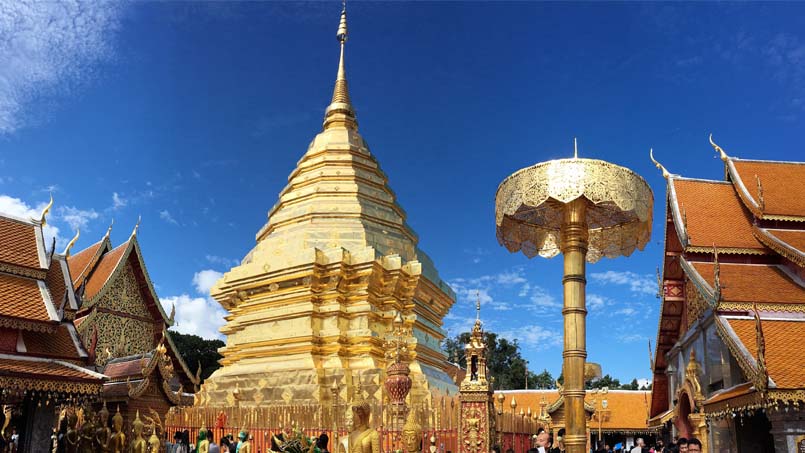What better place for a holiday than one of South East Asia’s most popular travel destinations – Thailand? With its beautiful beaches, national parks, benign climate, and incredible cuisine, Thailand continues to dominate at the forefront of South Asian tourism, and with good reason. Every year Bangkok makes the list of the best cities to visit, ranking first in Euromonitor International’s list of “Top City Destinations” with 21 million visitors.
Thailand has a rich culture with its customs and traditions dating back thousands of years. Learn about Thai etiquette and the language and become a more confident and culturally sensitive traveler.
Attractions
Thailand offers some of the best beach and island destinations with places such as Ko Samui and Railay. A true slice of paradise, Thai beaches deliver on their promise of white sand and clear blue waters. In addition, many of the islands offer other activities such as rock-climbing, white water rafting, kayaking and even elephant trekking, making these places immensely attractive options for families and couples. For vacationers searching for a feel of south Asian greenery and animal life, national parks such as the Khao Yai National Park and Kao Sok National Park offer a chance to immerse oneself in the natural beauty of Thailand. Along with the beautiful waterfalls and natural features, elephants can also be viewed in their natural habitat.
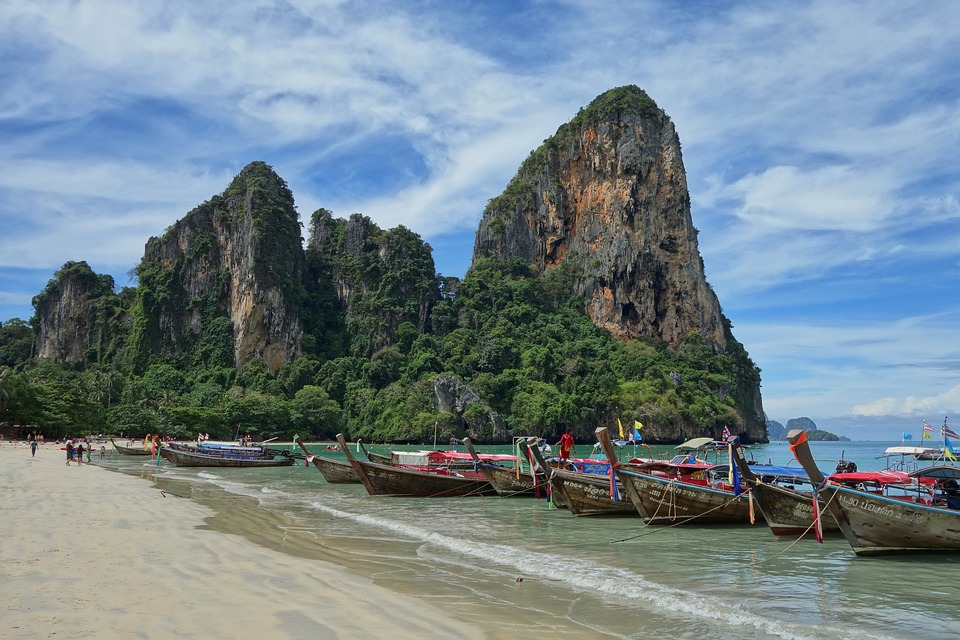
In the realm of music, festivals, and food, Thailand is often ranked highly with rich and unique aspects. A visit to Thailand would be incomplete without a viewing of the Poi dance, Yi Peng festival in Chiang Mai where floating paper lanterns light up the night sky, and the wonder that is Thai cuisine. Market visits to the Night Bazaar or the Floating Markets are considered another necessity to truly enjoy the authenticity of local food, shopping and commerce. Furthermore, the nightlife of Thailand, especially Bangkok, which ranges from hole-in-the-wall dive joints to extravagant rooftop bars and lively nightclubs, is an amazing attraction in the city.
As the only Southeast Asian state that avoided European colonial rule, Thailand boasts cultural and historical sites that date back to the Neolithic Civilization. With world heritage sites such as Sukhothai, Ayutthaya and Ban Chiang, Thai history is a well-documented reminder of a historically proud and unique society.
The primary cultural influence of Thailand is drawn from animism, Buddism and Indian culture. As the world’s most Buddhist nation, Thailand consists of an estimated 40,000 Buddhist temples (known as wat), featuring unique bell-shaped stupa and striking temple roofs. While most temples are open to tourists, care must be taken to dress appropriately (closed-toed shoes, shorts/pants that cover the knee, no bare shoulders) and act respectfully (no hats, sunglasses, smoking, gum chewing, or overly loud talking, shoes to be removed before entering worship areas and camera should be used thoughtfully).
Particular attractions that cannot be missed include Wat Pho, or the ‘Temple of the Reclining Buddha’, and Wat Arun, or the ‘Temple of Dawn’.
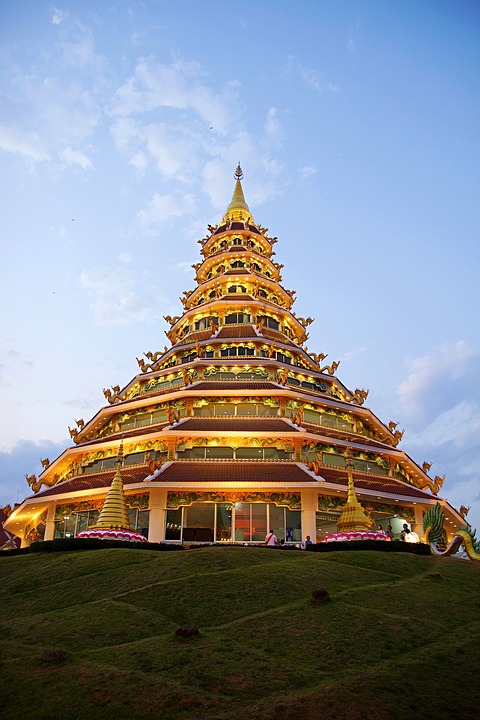
Cultural Etiquette
Dubbed the “Land of Smiles”, Thailand is a land of people quite tolerant of individualism. However, there is a vast cultural difference in comparison to western culture that tourists should be mindful of when visiting. Although western clothing is prevalent, Thai culture recommends a modest approach when it comes to dressing, especially in holy places.
A traditional Thai greeting is called ‘wai’ wherein a person places the palm of his or her hands together, with their fingers extended at chest level close to their body and bows slightly. Affection in public between people of opposite sexes is minimal and not generally accepted.
Thai food is eaten with a fork and a tablespoon rather than with chopsticks and a small amount of food is usually left over on the plate to indicate one is full. The king is also very highly respected, and disrespect toward any aspect of the monarchy is usually not tolerated.
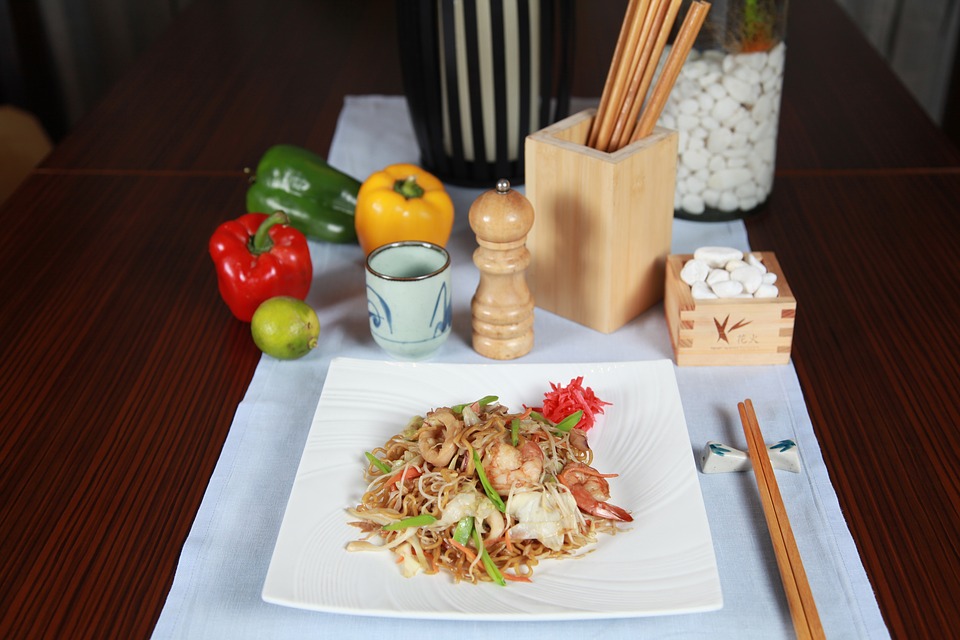
Useful Thai Phrases
Hello (General greeting) – sà-wàt-dee
How are you – sà-baai dee măi
Reply to ‘how are you’ – sà-baai dee króp (m) / sà-baai dee kâ (f)
Good morning or Good evening – sà-wàt-dee kráp (m) / sà-wàt-dee kâ (f)
I don’t know – chăn mâi róo
I understand – kâo jai láew
How much is this – raa-kaa tâo rài?
Sorry – kŏr tôht
Thank you – kòp kun
Fun Facts About Thailand:
Language: Thai

Currency: Thai baht
1. Thailand is the only Southeast Asian country that was never colonized by a European country. In fact, the name of the country in the Thai language is Prathet Thai, which means “land of the free.”
2. Its capital is Bangkok. However, the Thai name for Bangkok is one of the longest names of a place in the world: Krungthepmahanakhon Amonrattanakosin Mahintharayutthaya Mahadilokphop Noppharatratchathaniburirom Udomratchaniwetmahasathan Amonphimanawatansathit Sakkathattiyawitsanukamprasit. Phew! In case you were wondering, this means “City of Angels, Great City of Immortals, the Magnificent City of the Nine Gems, Seat of the King, City of Royal Palaces, Home of Gods Incarnate, Erected by Visvakarman at Indra’s Behest.”
3. Bangkok is the world’s most visited city, according to the Global Destinations Cities Index, ahead of London.
4. Boxing is the national sport of Thailand, but Elephant polo is another very popular sport. The King’s Cup is one of the key events in the sport’s calendar.
5. It has 1,430 islands, including Koh Phi Phi Lee, featured in Danny Boyle’s film The Beach.
Have fun learning Thai before you go and impress your Thai hosts. Click here to find out what this means in Thai!
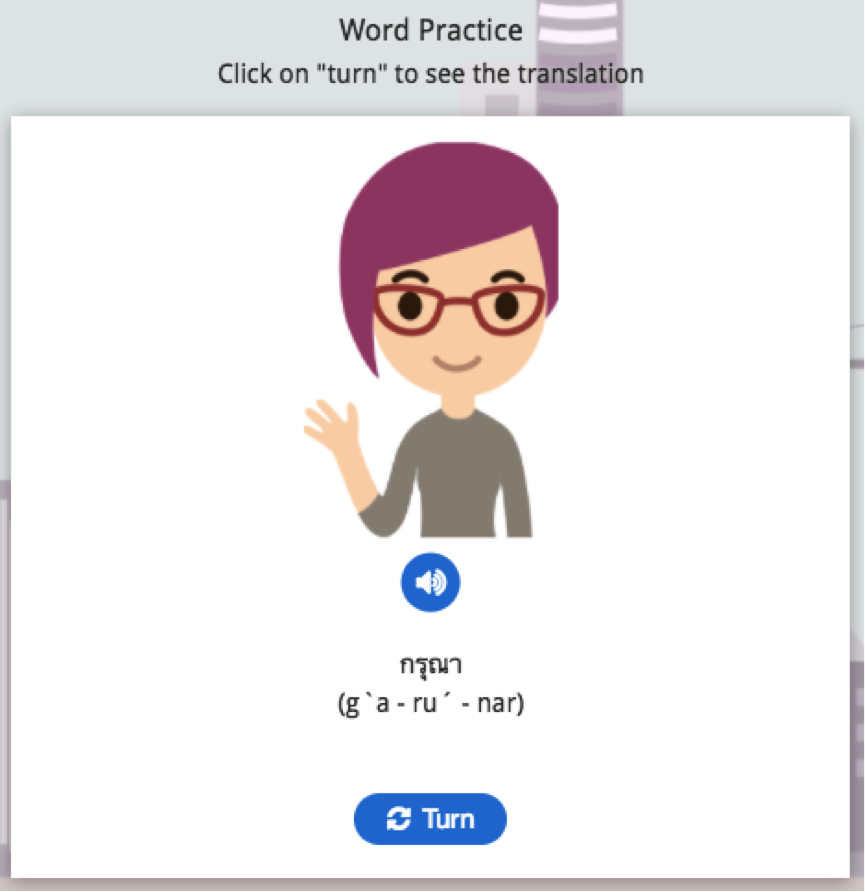
Andrie Steliou
Latest posts by Andrie Steliou (see all)
- 8 Ways to Help Keep Your Child Focused and Engaged in Online Learning - October 19, 2022
- How to Improve Social Intelligence Skills? - May 10, 2022
- How to Improve Organizational Skills at Workplace? - May 6, 2022

